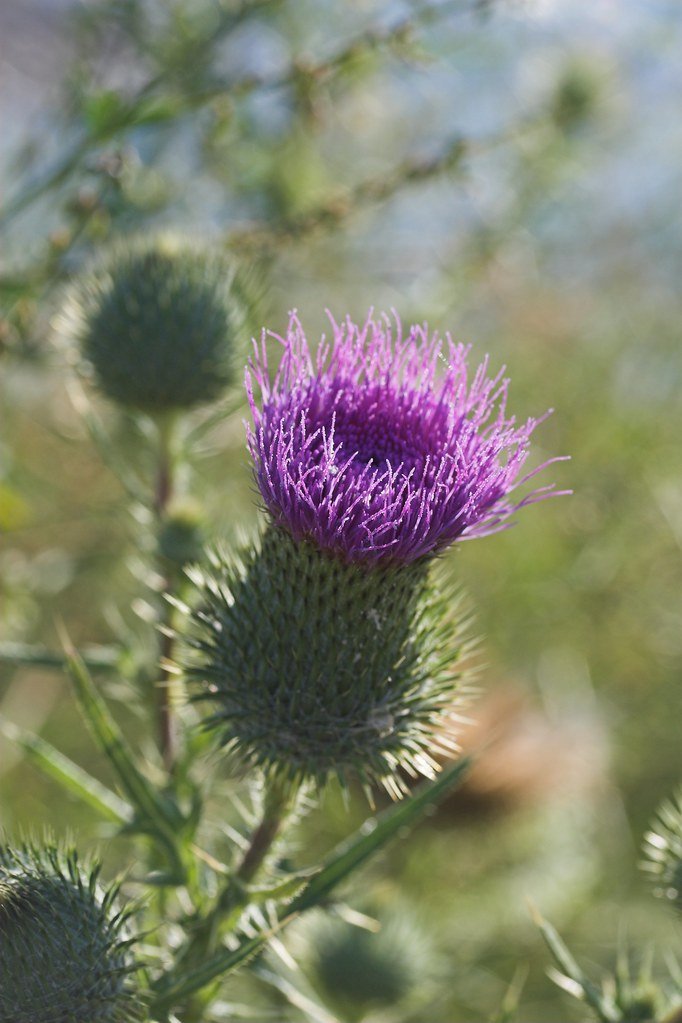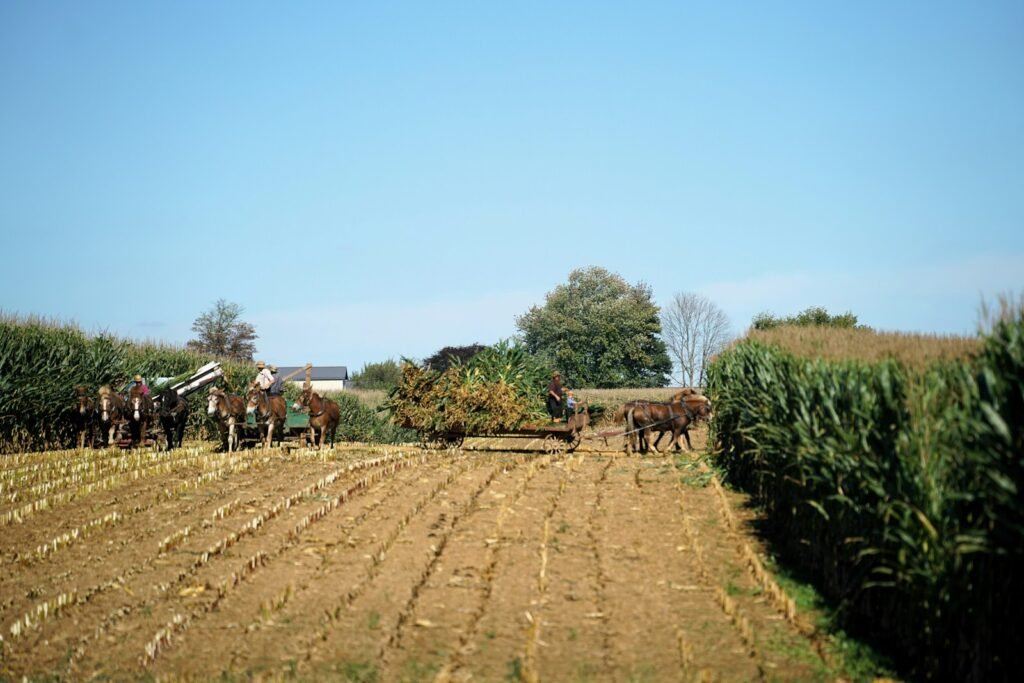Picture this: you’re walking through what should be a pristine Midwestern prairie, but instead of native wildflowers dancing in the breeze, you’re confronted by towering purple-topped spears reaching five feet high, their stems lined with razor-sharp leaves that could slice through denim. This isn’t some post-apocalyptic scene from a sci-fi movie – this is the reality of Canada thistle’s relentless march across America’s heartland. This plant is highly invasive, severely reduces pasture capacity and desirable forages, degrades wildlife habitat, and can hinder reforestation and landscape restoration efforts. Once a population gets established, it begins to quickly displace native vegetation, including desirable pollinator habitat, creating large stands with little biological diversity and low habitat value. What makes this invasion particularly unsettling is that despite its name, this botanical terrorist isn’t even Canadian – it’s a European immigrant that’s been waging war on North American ecosystems for over 400 years.
The Great Deception: Why “Canada” Thistle Isn’t Canadian at All
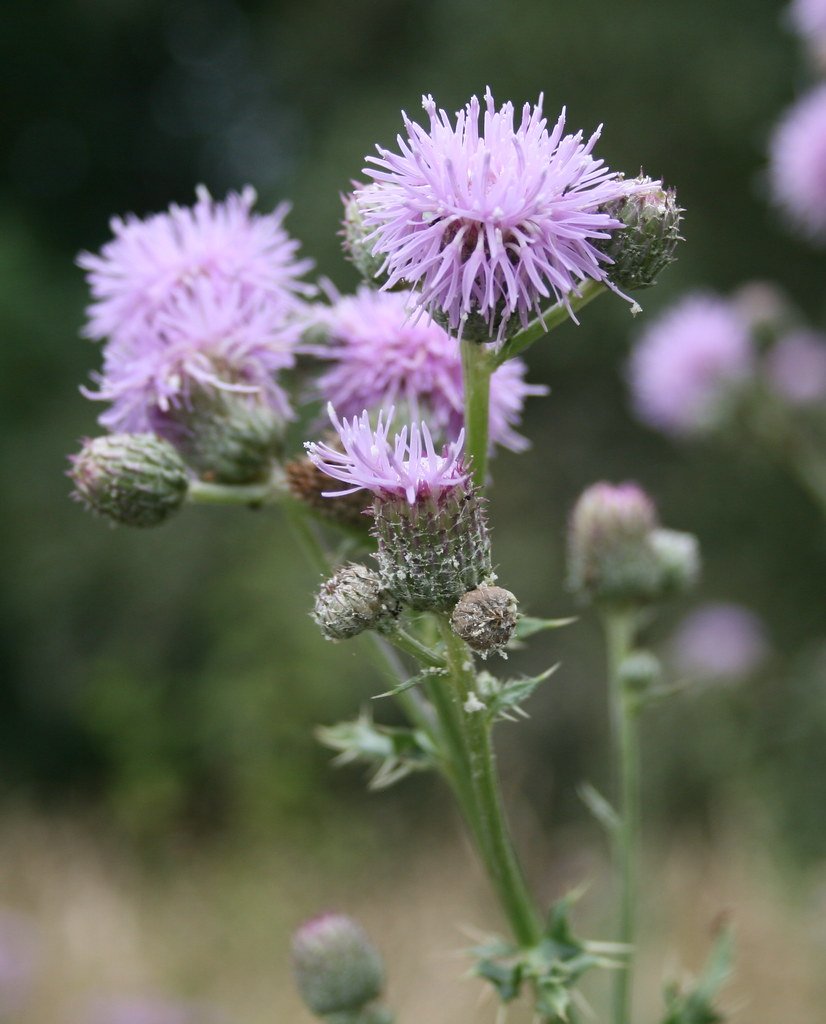
The story of Canada thistle’s misleading name reads like a case of historical finger-pointing gone wrong. Despite its name, this invasive thistle is not from Canada. It is believed to have come from the eastern Mediterranean region and was likely one of the first weeds that early settlers imported to North America. The plant was called “Canada” thistle because early New England residents blamed its emergence on French traders from Canada. However, historians believe it appeared in the United States and Canada at approximately the same time. Canada thistle is native to Europe. It was introduced to North America in the 1600s, probably in agricultural seed shipments and is now widespread throughout the United States and Canada. Imagine the irony – a plant so despised that entire colonies blamed their northern neighbors for it, when in reality, they probably brought it themselves in their own grain sacks. Its alternative name, creeping thistle, is more apt. This botanical blame game set the stage for centuries of misunderstanding about one of North America’s most persistent plant invaders.
The Underground Empire: Canada Thistle’s Secret Root Network
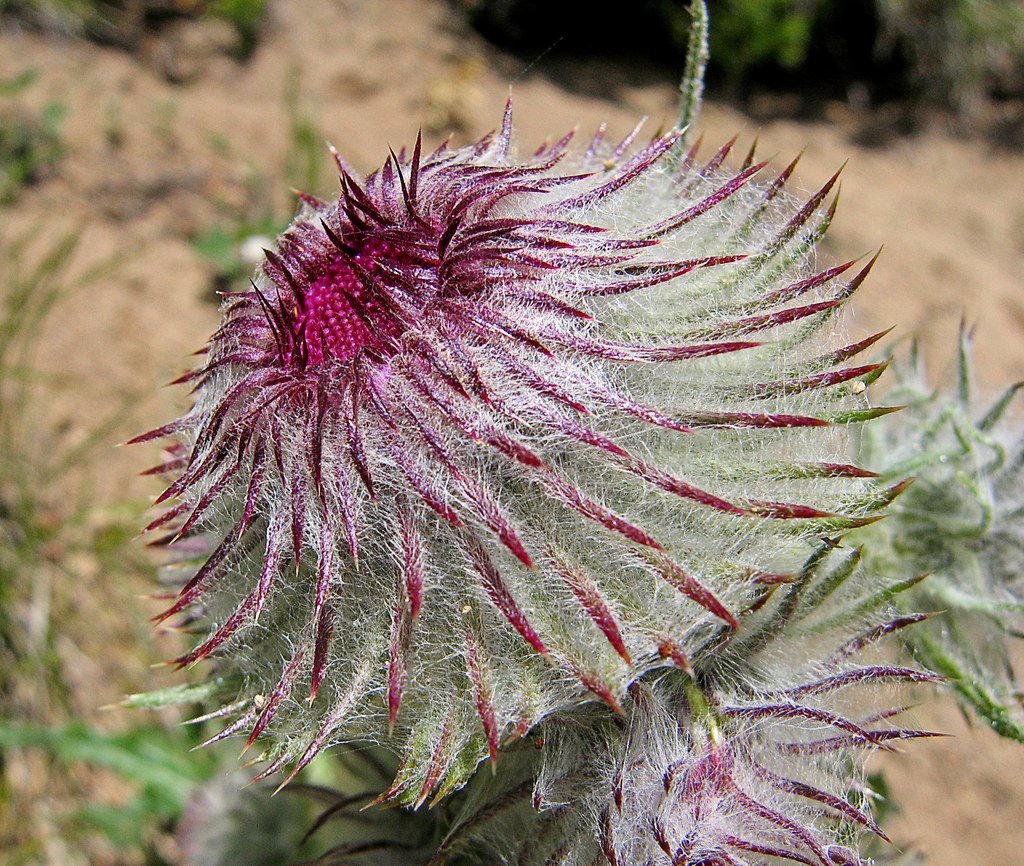
What you see above ground is just the tip of the iceberg when it comes to Canada thistle’s true menace. Vertical and lateral roots can extend up to 15′ depending on soil conditions, with one single plant able to produce up to 26 above-ground shoots, 154 underground shoots, and 364 feet of roots. Think of it as nature’s own version of the internet – an interconnected web of communication and resource sharing that spans enormous distances underground. Established plants spread laterally by producing creeping horizontal roots. These roots can send up new shoots at intervals of 5-15 cm (2 to 6 in.) and spread more than 6 m (20 ft.) in one year, producing a network of root growth measuring 485 m (1600 ft.) in total length. Seedlings begin to develop horizontal storage roots early, and a plant with only two true leaves may have a perennating storage root up to 6″ (15 cm) long. Vegetative buds develop on the storage root by the third true leaf stage. This underground empire operates like a biological bank account, storing energy and nutrients that allow the plant to survive repeated attempts at destruction. The roots act as both storage vaults and launching pads for new invasions, making Canada thistle virtually immortal in the plant kingdom.
The Regeneration Phenomenon: How Tiny Root Fragments Become New Invasions
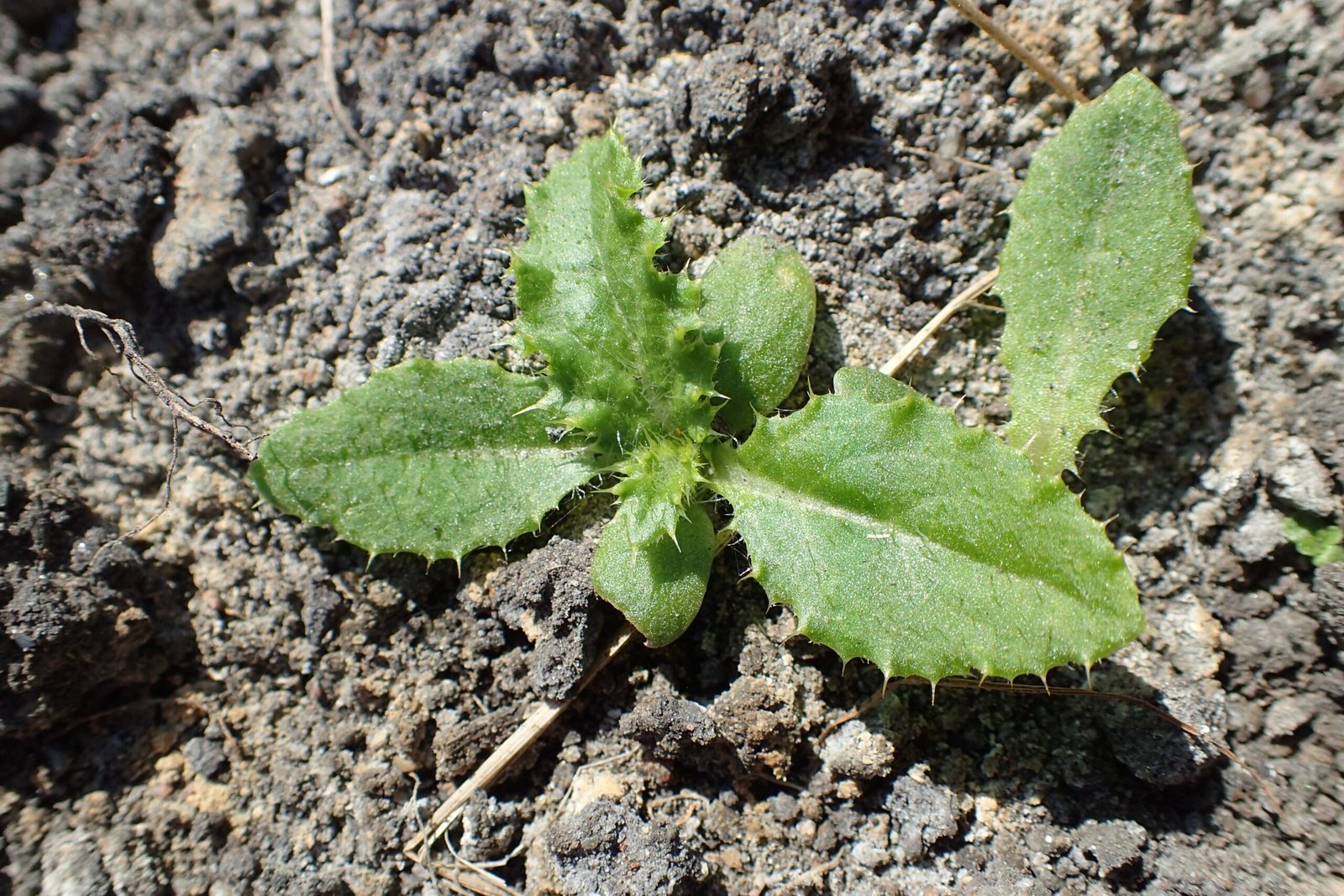
Here’s where Canada thistle gets truly terrifying from a land management perspective – it possesses superhero-like regeneration abilities that would make Wolverine jealous. New plants can be produced from root pieces as small as 1/8 to 1/4 of an inch (three to six mm) thick and 3/8 of an inch (eight mm) long. Chopped up roots over 0.1 inches in size are likely to become new plants. Smaller segments can become plants if they are close to the soil surface. This means that every time a farmer tills their field or a landscaper disturbs the soil, they’re potentially creating dozens of new thistle plants from tiny root fragments. Remarkably, regrowth can originate from root fragments as short as an inch, which makes tillage a significant challenge for growers, as it can spread these fragments and exacerbate the infestation. It’s like trying to kill a hydra – cut off one head, and several more grow back in its place. Each small section of root can form a new plant, enabling the plant to spread vegetatively. This regenerative ability turns routine farm equipment into unwitting accomplices in the thistle’s conquest, spreading fragments across fields and from farm to farm.
The Seed Factory: Canada Thistle’s Reproductive Powerhouse
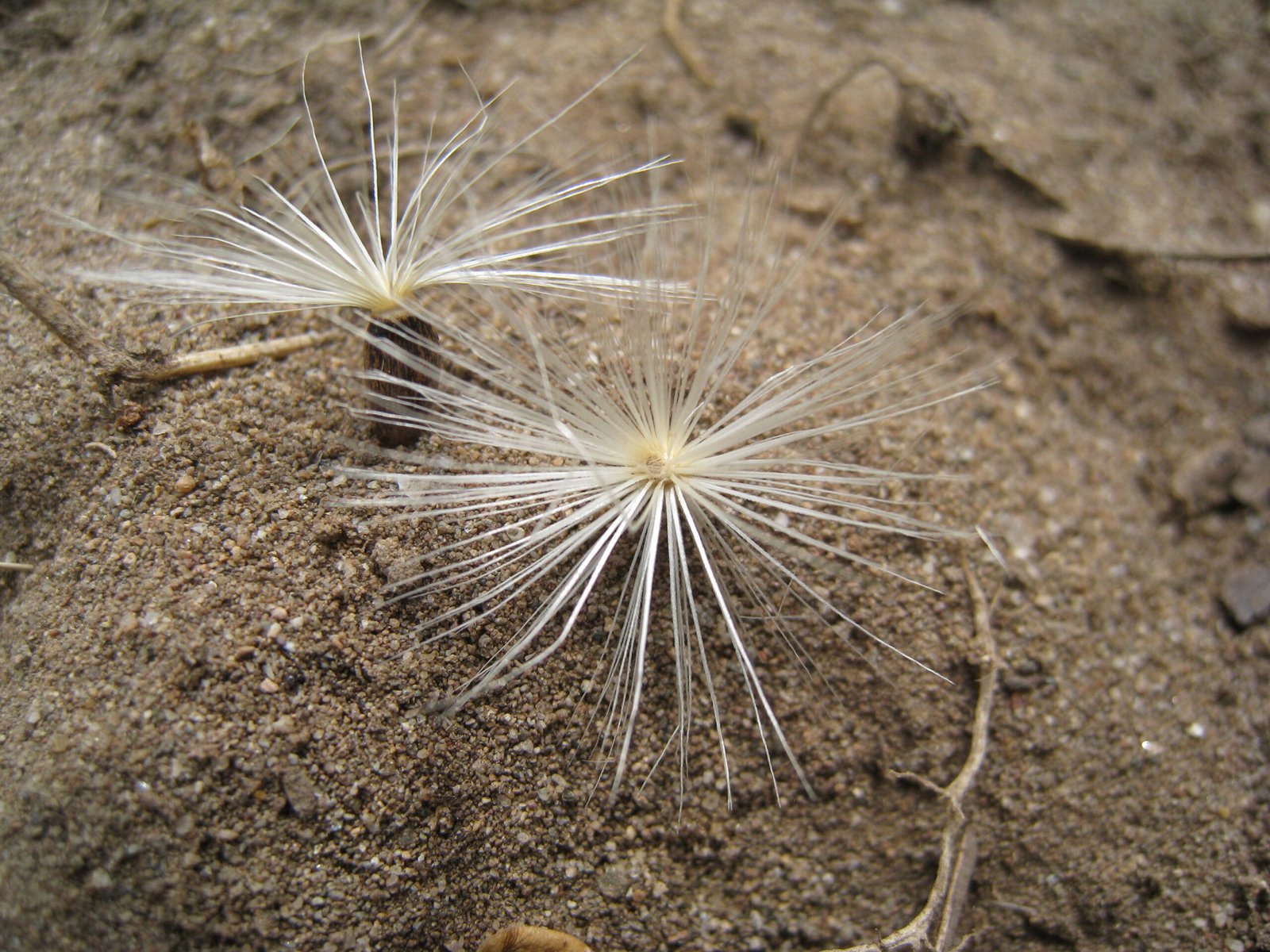
While the root system handles local domination, Canada thistle’s seed production ensures long-distance conquest across the continent. Mature thistle plants can contain up to 10,000 seeds per plant, and has an aggressive root system that continually produces new shoots. But here’s what makes these seeds particularly insidious – they’re designed for maximum survival and dispersal. Canada thistle has small seeds with feathery, white tufts to help with wind dispersal, although research has found that most seeds land near the parent plant. Seeds can separate from the white tufts. Seeds remain viable in the soil for over 20 years. Seed can remain viable in soil up to 22 years, and deep burial promotes survival longevity. Think about that – seeds produced today could still be germinating when your grandchildren are adults. Each flower produces up to 45 seeds, which can be blown by the wind or even carried by water. Canada thistle is a common weed in forage crops, so seeds can enter the farm in contaminated straw, including that used as mulches and as straw bedding for animals. This means that Canada thistle seeds can also be found in manure that hasn’t been properly composted.
The Economics of Invasion: Canada Thistle’s Multi-Billion Dollar Impact
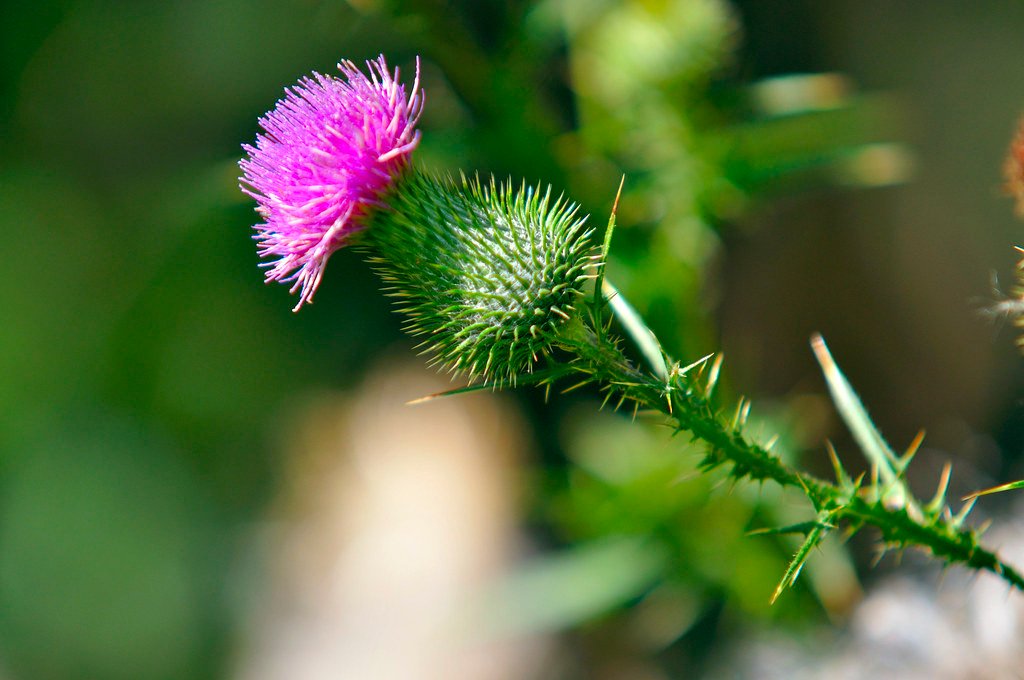
The financial carnage caused by Canada thistle reads like a disaster report from an economic war zone. A strong competitor for light, moisture and nutrients, Canada thistle can cause greater crop losses than any other broadleaf weed in Western Canada. The numbers are staggering and represent real money flowing out of farmers’ pockets. Studies show that 20 Canada thistle shoots per square metre can reduce canola yield by 24%. In wheat, 14 shoots per square metre can reduce yields by 38%. Yield losses as high as 60% in cereals have occurred. One study indicated that 10 thistle shoots per square metre reduced barley yields by roughly 20%. Another showed that 2 thistle shoots per square metre reduced wheat yields by about 15%. Ten shoots per square metre can reduce winter wheat yields by about 20%. When you multiply these losses across millions of acres of farmland, you’re looking at economic damage that rivals major natural disasters. In 2002, the Colorado Department of Agriculture surveyed counties and while incomplete, the results showed more than 100,000 acres infested with Canada thistle. And that was just Colorado – imagine the scope when multiplied across the entire Midwest.
The Biological Clock That Rules an Empire
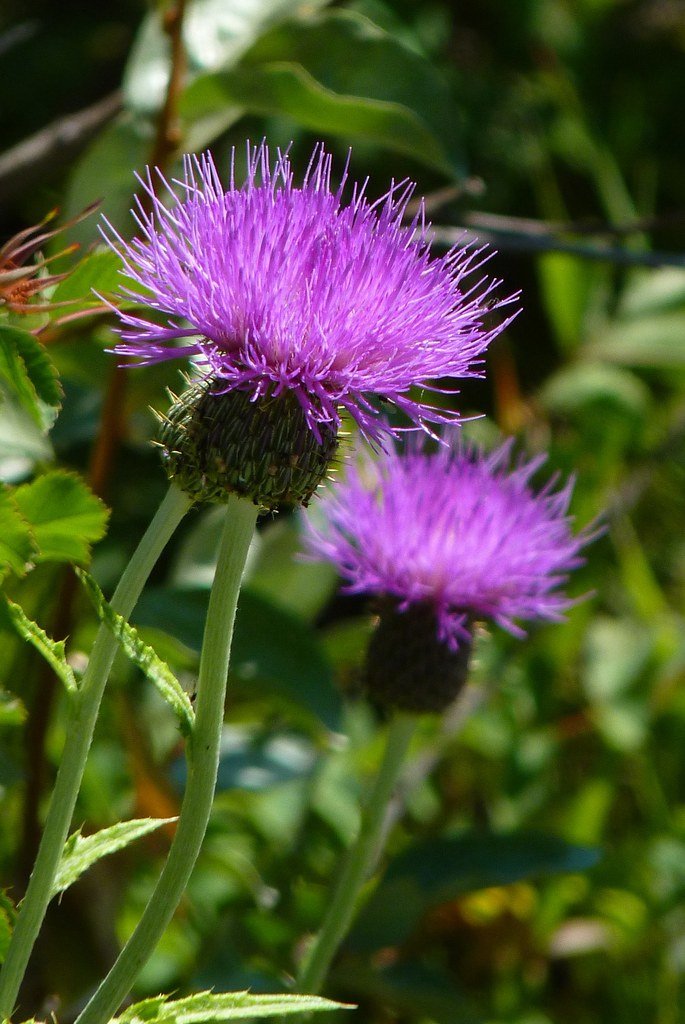
Canada thistle operates on a sophisticated biological schedule that has evolved over millennia to maximize its survival and spread. Canada thistle begins to flower in late spring to early summer in response to 14- to 16-hour days. When new shoots emerge during late May and June, the long day-length triggers the immediate drive toward sexual reproduction and the energy reserves in the roots are the fuel for this process. Once the reproductive stage is complete the thistle plant switches to survival mode. Shortening day lengths, which signal the approach of winter, trigger the movement of energy to the root for storage. Above ground parts produced by Canada thistle die back completely each winter and new shoots are produced from root buds in the spring. This internal clock system makes the plant incredibly predictable yet frustratingly resilient. Thistles will remain as rosettes when sunlight hours drop below 15 hours per day. Understanding this biological rhythm is crucial for anyone hoping to control these invasive plants, as timing interventions wrong can actually strengthen the thistle’s position rather than weaken it.
The Gender Wars: Male and Female Plants in Separate Armies
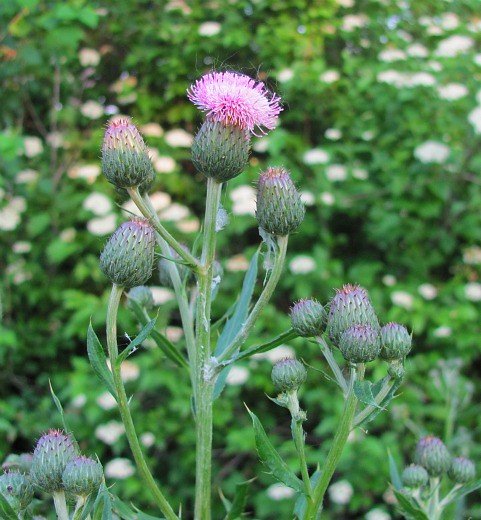
One of Canada thistle’s most unusual characteristics is its approach to gender – it’s what botanists call dioecious, meaning individual plants are either male or female. Canada thistle has male and female flowers on separate plants, but the flowers look similar to each other. Male flowers will not produce seeds. Plants are male or female (dioecious) and grow in circular patches that often are one clone and sex. This creates fascinating dynamics in thistle populations, where entire patches might be predominantly one gender. Female flowers produce a sweet odor and insects readily pollinate different sexed patches up to 200 feet apart. Canada thistle has both male and female plants; male flowers are about ½” in diameter and female flowers are about 1″ in diameter. The female plant can produce up to 45 seeds per flower and are dispersed via wind, water, animals, and equipment. This gender separation means that for successful seed production, you need both male and female plants within pollinating distance of each other – but given the plant’s aggressive spreading habits, this rarely poses a problem for the thistle, only for those trying to control it.
The Microscopic Army: Canada Thistle’s Secret Microbial Allies
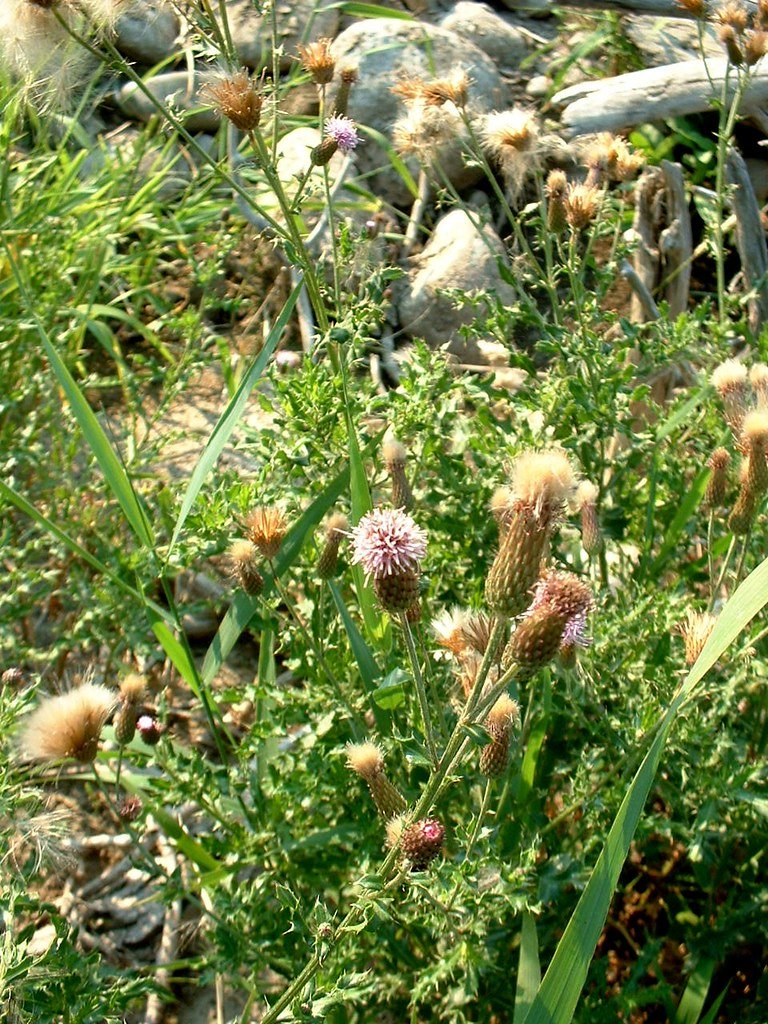
Recent scientific research has revealed that Canada thistle doesn’t conquer ecosystems alone – it brings along a microscopic army of beneficial bacteria and fungi. Amplicon sequencing revealed a stable core microbiome that was detected in the Canada thistle rhizosphere across all locations. The core microbiome was dominated by the bacterial phyla Actinobacteriota and Proteobacteria and fungal phyla Ascomycota and Basidiomycota. The rhizosphere microbiome was similar in composition across environments, highlighting the stable association between Canada thistle and specific microbial taxa. This study characterized the core microbiome of Canada thistle, and the findings highlight plant-microbe interactions shaping invasive behavior. Think of these microorganisms as Canada thistle’s personal support crew, helping it extract nutrients from soil, fight off diseases, and establish dominance over native plants. Differential abundance analysis showed rhizosphere fungal communities were enriched in pathogen-containing genera with a 1.7-fold greater abundance of Fusaria and a 2.6-fold greater abundance of Gibberella compared to bulk soil. Predictive functional profiling showed rhizosphere communities were enriched in plant pathogen fungal guilds. This research suggests that Canada thistle literally changes the soil ecosystem around its roots, creating conditions that favor its growth while potentially suppressing competitors through pathogenic fungi.
The Ecosystem Demolition Crew: How Canada Thistle Destroys Biodiversity
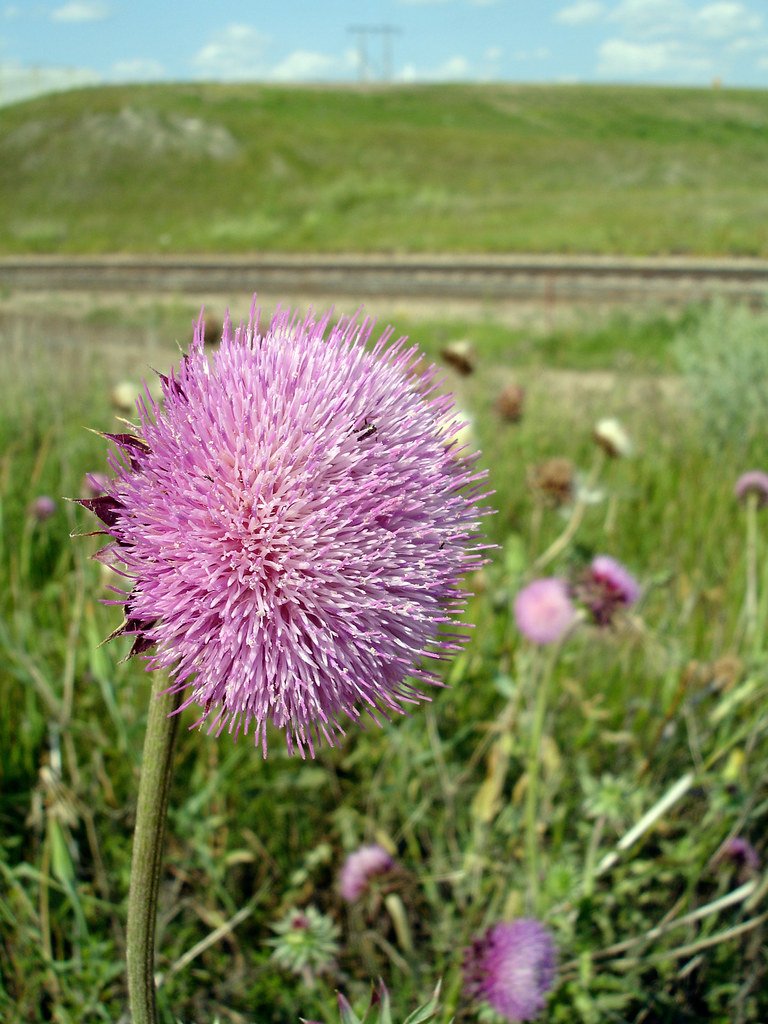
When Canada thistle moves into an ecosystem, it doesn’t just compete with native plants – it systematically dismantles the complex web of relationships that took centuries to develop. Crowds out native species; reduces crop and forage yields. In addition to crowding out native plants, Canada thistle reduces the quality of rangelands and causes severe crop-yield losses, such as canola, barley and wheat. The plant’s aggressive nature creates what ecologists call “biological deserts” – areas where biodiversity plummets dramatically. Because Canada thistle can form very dense patches, crops can quickly become choked out. Because Canada thistle can form very dense patches, crops can quickly become choked out. Canada thistle reduces forage consumption in pastures and rangeland because cattle typically will not graze near infestations. This avoidance by livestock creates a vicious cycle where ungrazed areas become even more suitable for thistle expansion. The plant’s spiny nature and aggressive growth habit essentially create no-go zones for both wildlife and domestic animals, fragmenting habitats and disrupting feeding patterns that native species depend upon for survival.
The Perfect Storm: Environmental Conditions That Fuel the Invasion
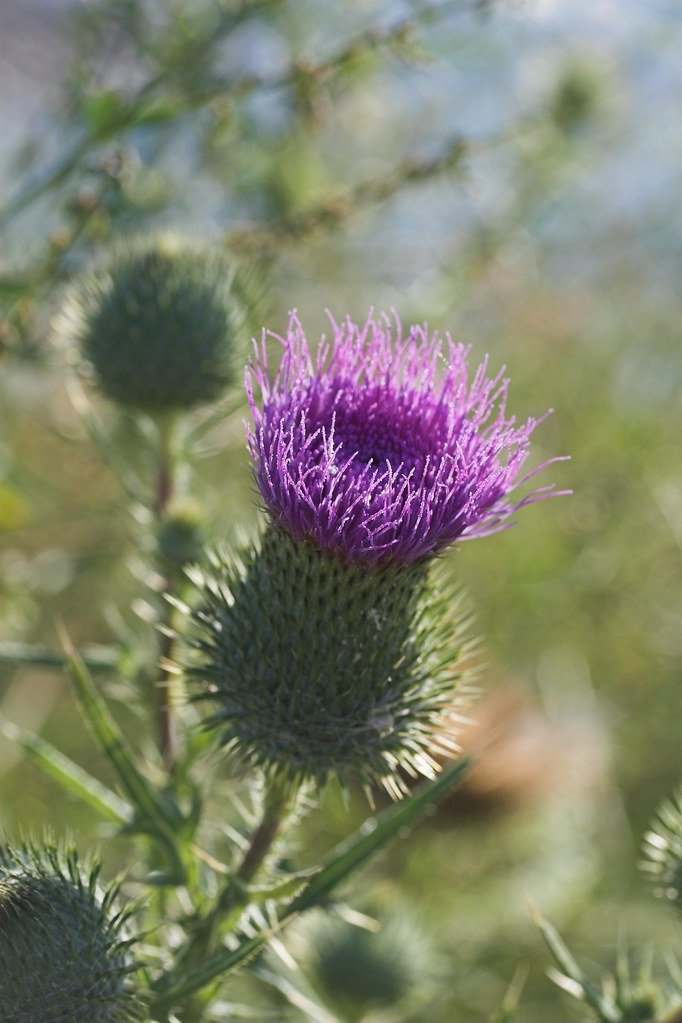
Canada thistle thrives in conditions that are becoming increasingly common across the Midwest due to climate change and human activity. Canada thistle grows in a variety of soils and can tolerate up to 2 percent salt content. It is most competitive in deep, well-aerated, productive, cool soils. It usually occurs in 17- to 35-inch annual precipitation zones or where soil moisture is adequate. Generally, infestations start on disturbed ground, including ditch banks, overgrazed pastures, tilled fields or abandoned sites. The plant is essentially an opportunist that capitalizes on human-created disturbances. Canada thistle grows in a variety of habitats with full or partial sun and is often found in disturbed areas such as roadsides, trails, pastures, and recently flooded areas. Canada thistle grows best in full sun and disturbed upland soils but can also survive in cooler, wet soils and more shaded situations. Canada thistle can also tolerate drought conditions. This adaptability means that as agricultural practices intensify and climate patterns shift, Canada thistle finds more and more suitable habitat. Every new road cut, abandoned lot, or over-tilled field becomes a potential beachhead for the next wave of invasion.
The War Zone: Current Battlegrounds Across the Midwest
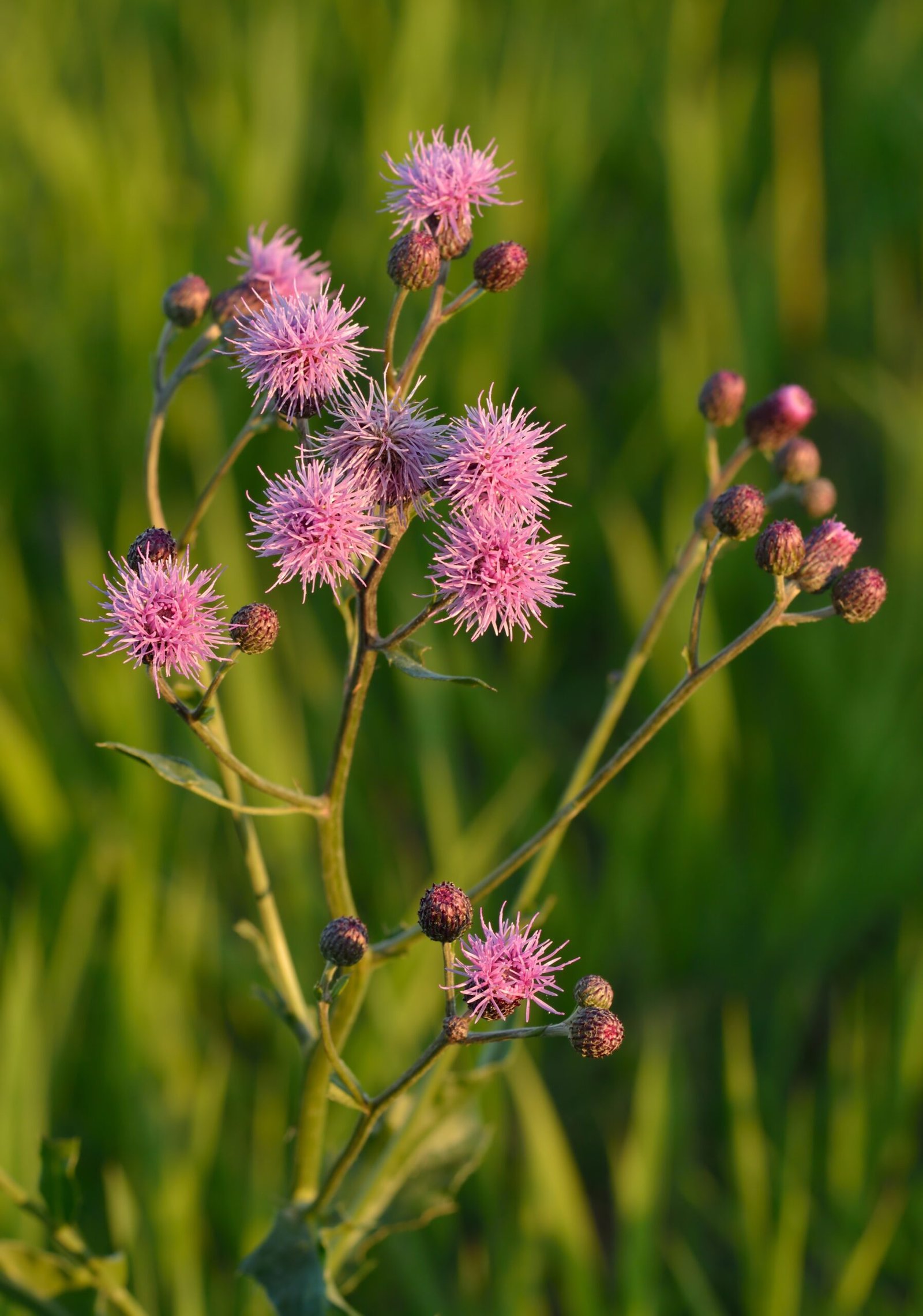
The front lines of the Canada thistle invasion run through every Midwestern state, with some areas experiencing what can only be described as botanical warfare. From Canada the thistle spread south into the northern United States and onto the Great Plains. It is found in Wyoming, Nebraska, Oregon, Washington, Idaho, Colorado and many other states today. Canada thistle has been designated a noxious weed in Nebraska since 1873. Canada thistle is found in all Canadian provinces, as well as the Yukon and Northwest Territories. It typically grows in open areas, including pastures, cultivated fields, logged forests, riverbanks and roadsides. Canada thistle is officially classified as noxious (harmful to crops and/or natural areas) in Ontario, Alberta, BC, Saskatchewan, Manitoba and Quebec. The plant has been so successful that it’s now classified as a noxious weed in dozens of states and provinces. Efforts must be made to prevent seed maturation and dispersal of plants into new areas. Additionally, no transportation, propagation, or sale of these plants is allowed. Failure to comply may result in enforcement action by the county or local municipality. Legal battles now rage in courtrooms as municipalities struggle to enforce control measures, and the plant continues its relentless march across previously untouched ecosystems.
The Timing Game: When Canada Thistle Is Most Vulnerable
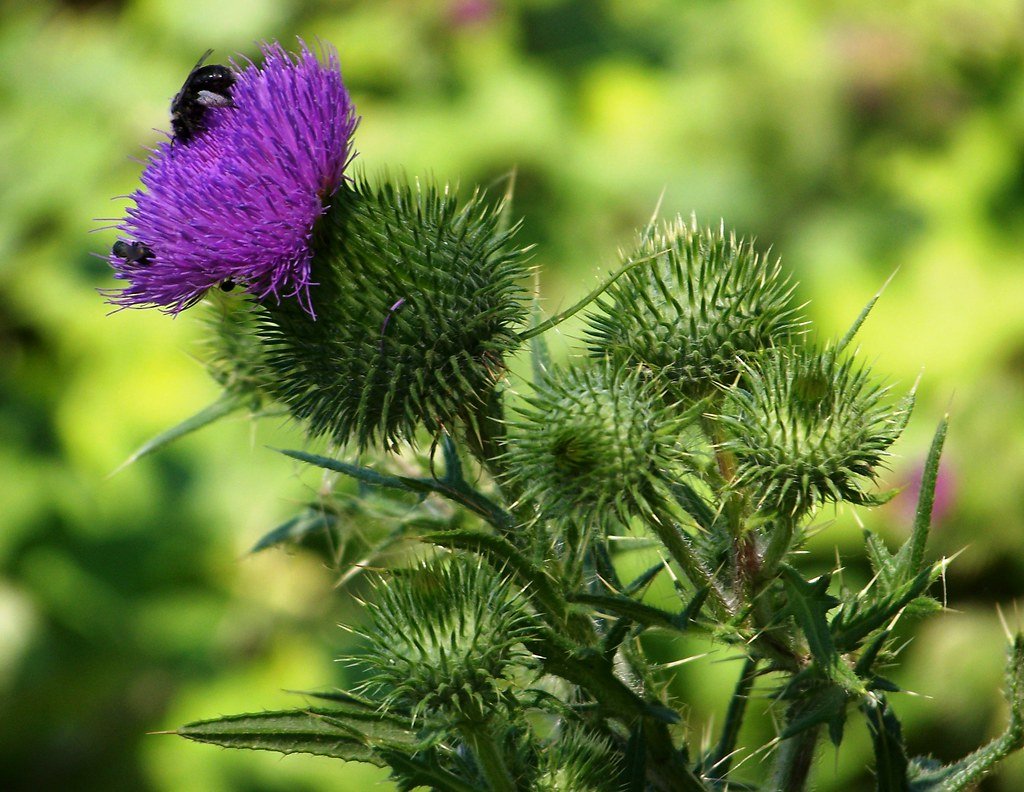
Despite its formidable defenses, Canada thistle does have windows of vulnerability that smart land managers can exploit. Timing is critical for chemical applications. Spraying when plants are at the rosette to early bolting stages in the fall are most effective, based on the plant active translocation to the roots at that period. Another time when storage roots are kind of depleted are when the plant produces flower buds, meaning this is another key time to take a chunk out of the above-ground growth. Studies have shown that weeding every 21 days is a good balance of preserving your own energy while still depleting the thistles. Mowing will weaken roots and is most effective when flower buds are just about to open. Do not mow when seed is present, as that will spread the seeds. At this early stage, it does not have a perennial root, so it can be killed by cultivation. However, a 3-week-old seedling can regenerate after the top-growth is clipped. The key is understanding that Canada thistle operates on energy cycles – there are brief periods when the plant is transferring energy from its roots to support flowering, making the underground storage system

